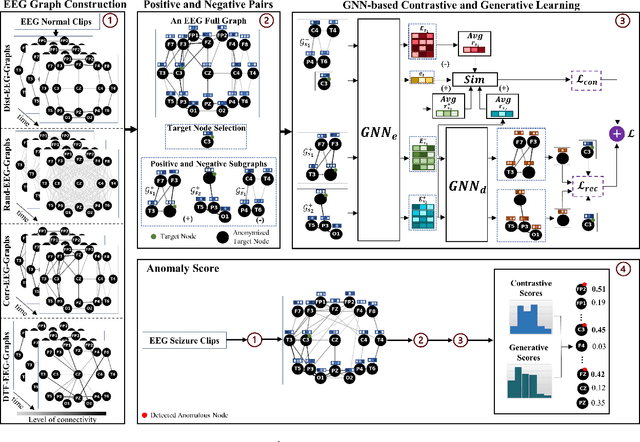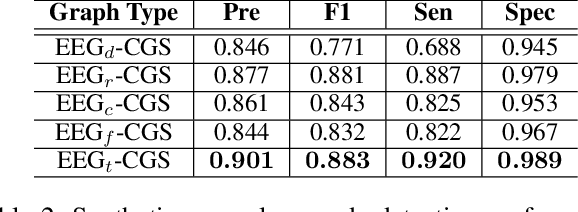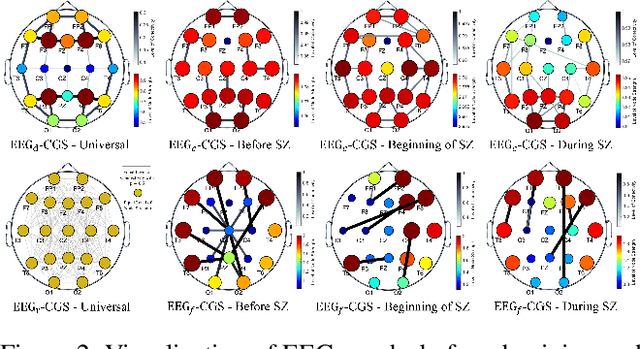Self-Supervised Learning for Anomalous Channel Detection in EEG Graphs: Application to Seizure Analysis
Paper and Code
Aug 15, 2022



Electroencephalogram (EEG) signals are effective tools towards seizure analysis where one of the most important challenges is accurate detection of seizure events and brain regions in which seizure happens or initiates. However, all existing machine learning-based algorithms for seizure analysis require access to the labeled seizure data while acquiring labeled data is very labor intensive, expensive, as well as clinicians dependent given the subjective nature of the visual qualitative interpretation of EEG signals. In this paper, we propose to detect seizure channels and clips in a self-supervised manner where no access to the seizure data is needed. The proposed method considers local structural and contextual information embedded in EEG graphs by employing positive and negative sub-graphs. We train our method through minimizing contrastive and generative losses. The employ of local EEG sub-graphs makes the algorithm an appropriate choice when accessing to the all EEG channels is impossible due to complications such as skull fractures. We conduct an extensive set of experiments on the largest seizure dataset and demonstrate that our proposed framework outperforms the state-of-the-art methods in the EEG-based seizure study. The proposed method is the only study that requires no access to the seizure data in its training phase, yet establishes a new state-of-the-art to the field, and outperforms all related supervised methods.
 Add to Chrome
Add to Chrome Add to Firefox
Add to Firefox Add to Edge
Add to Edge